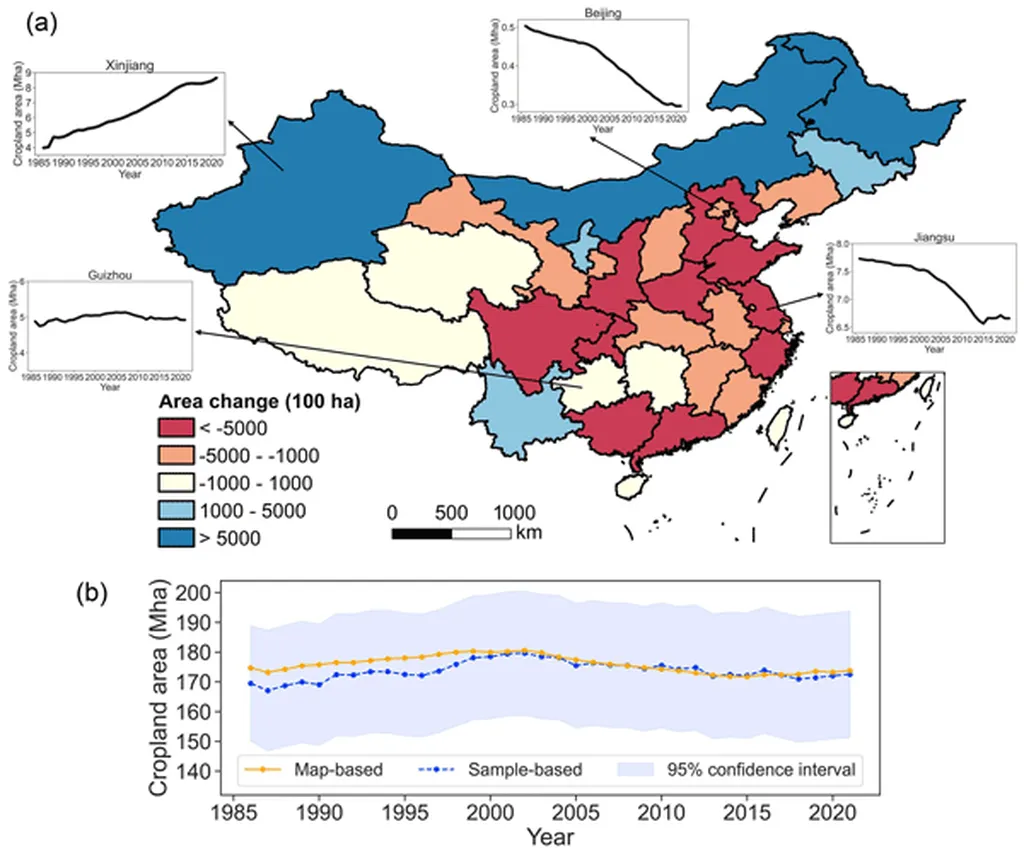In the vast and rugged terrain of Xizang, also known as Tibet, monitoring cropland has always been a challenge due to its fragmented landscapes and complex cropping systems. However, a recent study published in *Scientific Data* has introduced a groundbreaking parcel-level cropland dataset that promises to revolutionize agricultural research and land management in the region. The dataset, generated using deep learning and high-resolution Google Earth imagery, offers unprecedented insights into Xizang’s cropland patterns, with significant implications for the agriculture sector.
The study, led by Chuya Wang from the Institute of Remote Sensing and Digital Agriculture at the Sichuan Academy of Agricultural Sciences, presents the first-ever parcel-level cropland dataset for Xizang. The dataset comprises 1,072,110 individual parcels, covering approximately 290,721.35 hectares, primarily concentrated in the Three River Region. The accuracy of the dataset was validated through field checks using 155 UAV samples, showing a remarkable 90% area matching accuracy. Additionally, cross-comparisons with two existing cropland products of Xizang demonstrated strong linear correlations, with R2 values of 0.87 and 0.90.
One of the standout features of this dataset is the inclusion of field shape indicators, such as main direction, regularity, and contiguity. These indicators provide a more nuanced understanding of the cropland patterns, which can be crucial for precise agricultural monitoring and land-use planning.
The commercial impacts of this research are substantial. Accurate cropland data is essential for yield estimation, land management planning, and policy formulation. With this dataset, farmers, agronomists, and policymakers can make more informed decisions, leading to improved crop yields and sustainable land use. As Chuya Wang explains, “This dataset offers critical insights into Xizang’s fine-scale cropland patterns, serving as a foundation for parcel-level agricultural monitoring, land-use planning, and policy formulation.”
The implications of this research extend beyond Xizang. The methodology used in this study can be applied to other regions with similar challenges, potentially transforming agricultural research and land management on a global scale. As the agriculture sector continues to grapple with the impacts of climate change and the need for sustainable practices, such advancements in technology and data analysis are more crucial than ever.
In the words of the lead author, Chuya Wang, from the Institute of Remote Sensing and Digital Agriculture at the Sichuan Academy of Agricultural Sciences, this dataset marks a significant step forward in our understanding of cropland patterns and their management. As we look to the future, the integration of deep learning and high-resolution imagery holds immense potential for shaping the agriculture sector and promoting sustainable development.

